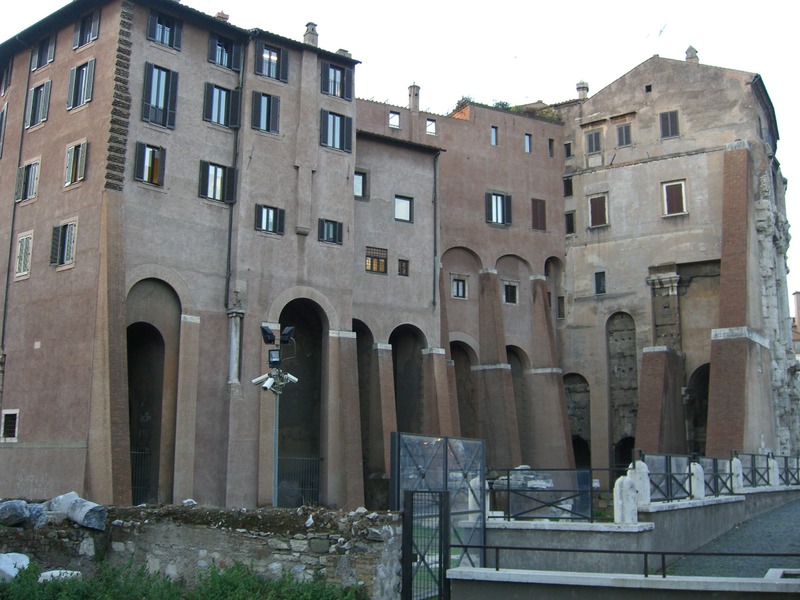Afterlife
As the theatre fell into disuse, some of its stone was taken for use in other construction projects. In the 4th century, material in mass amounts from the stage front and porticus was repurposed and used on the Bridge of Cestius.1 The stage building persisted until 421 A.D. when Petronius Maximus displayed statues in it. In the 11th and 12th centuries, the theatre was taken over by the Pierleone family and converted into a fortress between the Tiber Island and Capitoline Hill.2 In 1368, the stronghold was taken over by the Savelli family who hired Baldassare Peruzzi in 1519 to create a palazzo that incorporated the theatre’s ruins. This palazzo is what we still see today, with several additions that were added in 1712 under the direction of the Orsini family.
In 1926-1932, there was a series of demolitions and restorations in order to create a new road, the Via del Mare, that passed out of the city and towards the sea. The shops existing in the arcades were removed then and the ground was cleared away to its ancient level. In 1999, there was an excavation that traced the perimeter of the original stage building and uncovered some statues and a marble altar to Hercules which had been placed within the building.3
______________________________________________________________________________
1 Amanda Claridge, Judith Toms, and Tony Cubberley, Rome: An Oxford Archaeological Guide (Oxford: Oxford University Press, 2010), 277.
2 Claridge, Rome, 275.
3 Claridge, Rome, 277.
